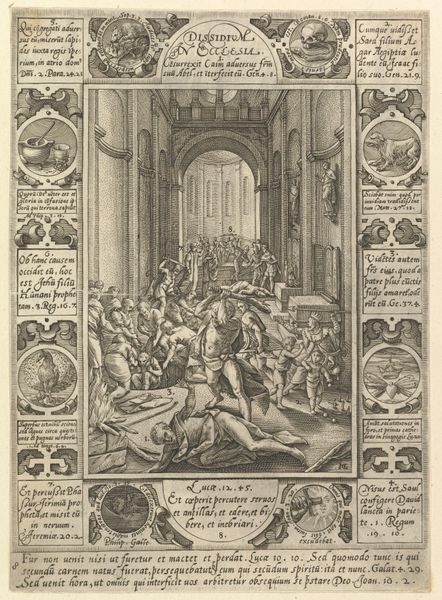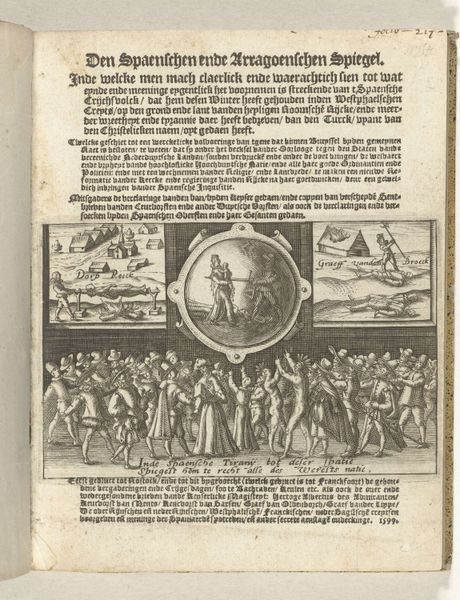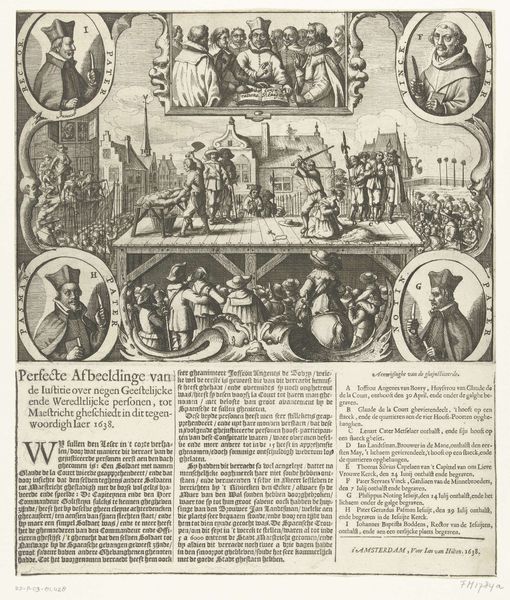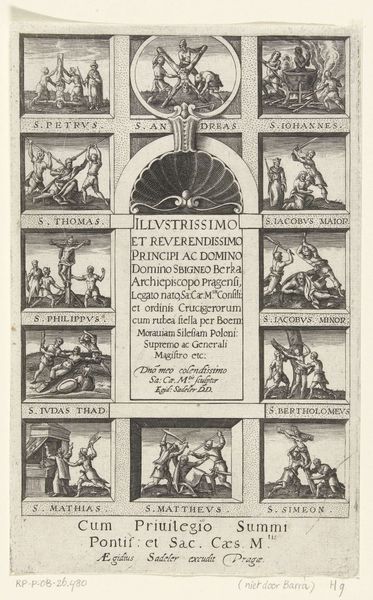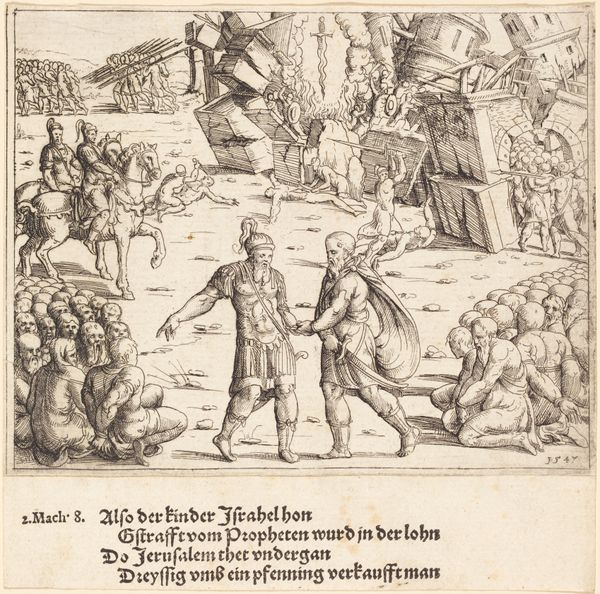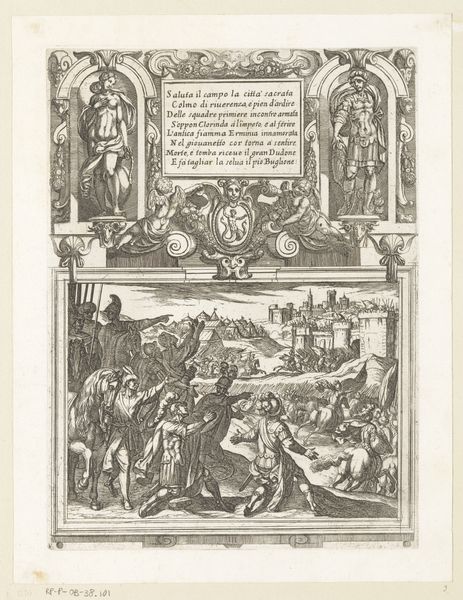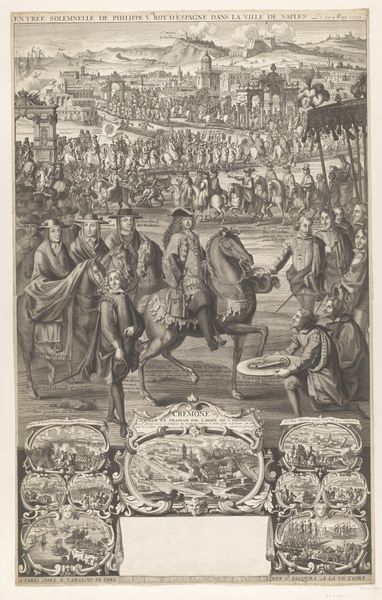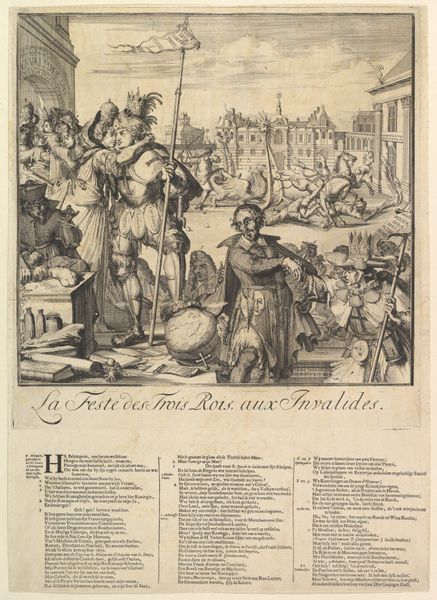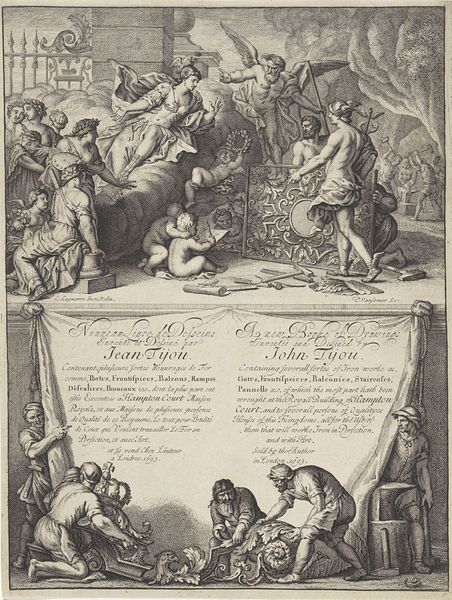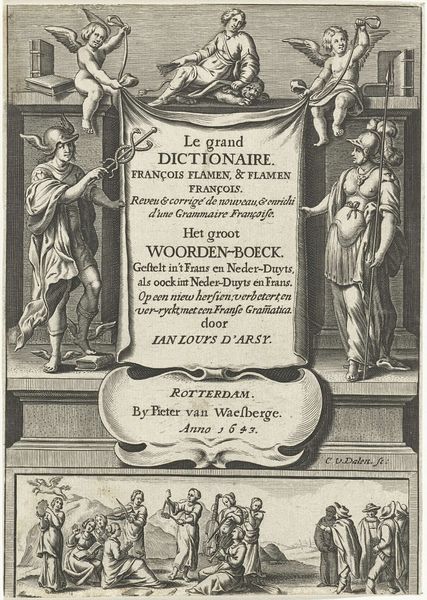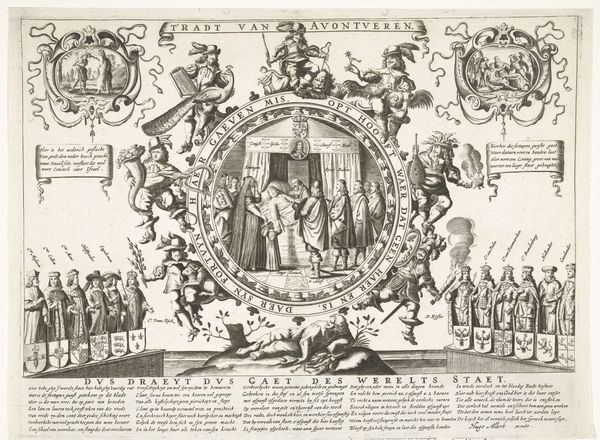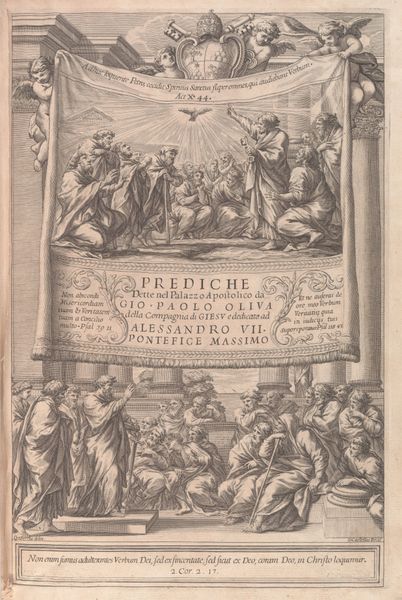
Paye qui Tombe: Die eerst valt betaelt de Speelman, die laest, de Kosten (The Fall of the Country: The First That Falls Pays the Player, the Last the Costs) 1660 - 1708
0:00
0:00
drawing, print, engraving
#
drawing
#
narrative-art
#
baroque
# print
#
figuration
#
line
#
history-painting
#
engraving
Dimensions: sheet: 20 5/16 x 15 9/16 in. (51.6 x 39.5 cm)
Copyright: Public Domain
This is a printed sheet made in Amsterdam, likely around 1740, by Romeyn de Hooghe. It’s a great example of how printmaking could engage with political issues of the day. The material here is paper, of course, made from pulped rags, and ink, likely derived from carbon. These relatively inexpensive materials allowed for mass production and wide distribution, a vital form of social media at the time. The print was made using engraving, a skilled intaglio process in which lines are incised into a metal plate, which is then inked and pressed onto the paper. De Hooghe used this technique to create a teeming composition representing the fall of nations, with figures tumbling from a precarious scaffolding. The print is dense with detail and visual metaphor, reflecting the complex political landscape of 18th-century Europe, where the fortunes of nations rose and fell through alliances and conflicts. It's a reminder that even seemingly humble materials like paper and ink can be powerful tools for social commentary.
Comments
No comments
Be the first to comment and join the conversation on the ultimate creative platform.
